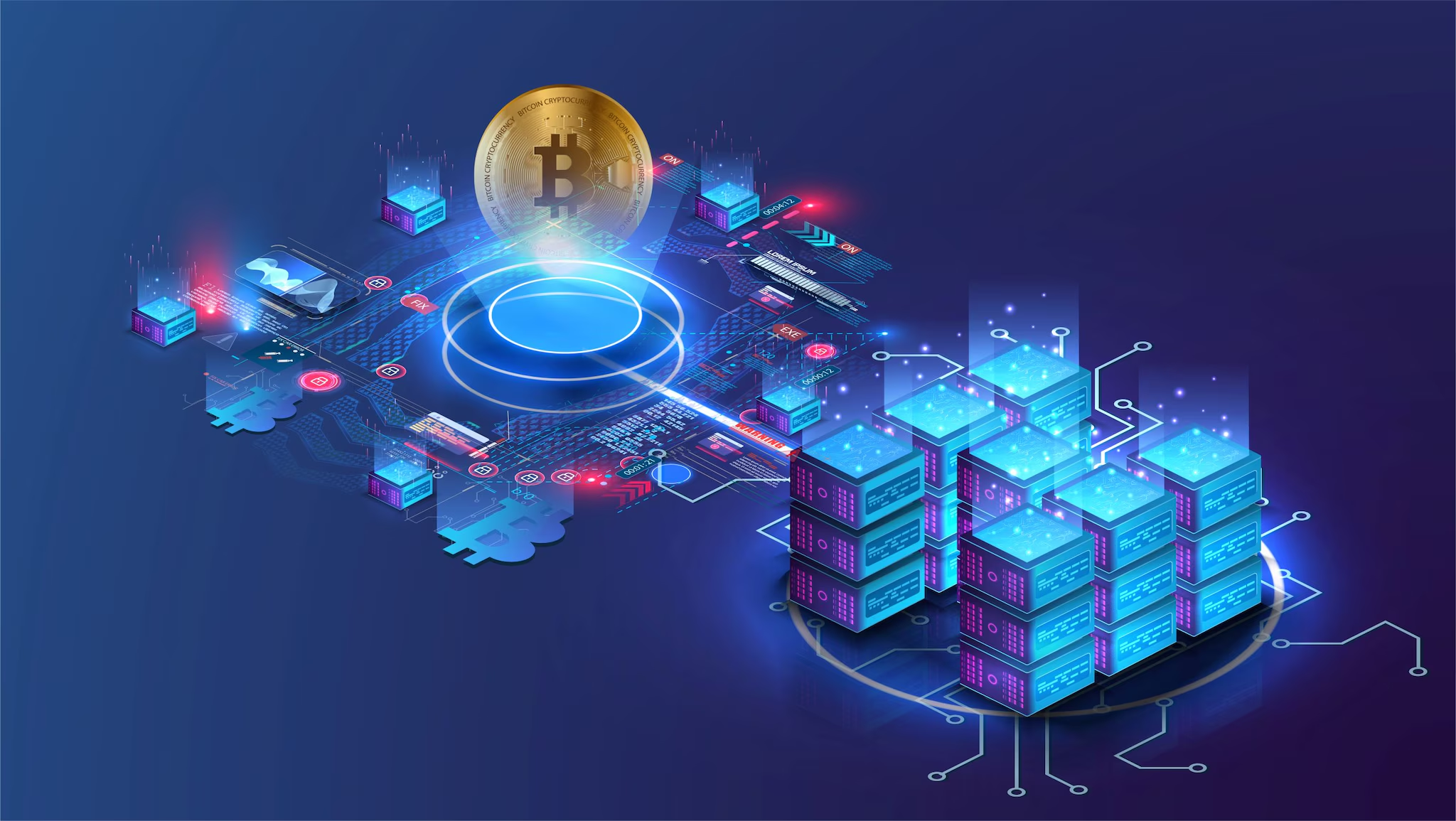In the vast and often misunderstood world of blockchain technology, a blockchain explorer serves as a critical tool. It functions like a search engine and a ledger viewer rolled into one, allowing users to inspect transactions, blocks, addresses, and more. For those new to cryptocurrencies or seasoned developers alike, understanding how to use a blockchain explorer is essential for transparency, verification, and research.
While cryptocurrencies like Bitcoin and Ethereum tend to dominate headlines, the true power of blockchain technology lies in its open, verifiable, and immutable nature — and that transparency would be nearly inaccessible without blockchain explorers. This article explores what blockchain explorers are, how they work, their significance, types, and how they are evolving to support broader blockchain applications.
What Is a Blockchain Explorer?
At its core, a blockchain explorer is a web-based tool or application that provides a user-friendly interface to interact with blockchain data. Think of it as a “browser” for a blockchain. It allows users to view information about blocks, transactions, addresses, fees, and even smart contracts on certain blockchains.
Each transaction made on a blockchain network — whether it’s transferring cryptocurrency, interacting with a decentralized app (dApp), or minting an NFT — gets recorded in a block. A blockchain explorer makes it easy to find and verify these entries.
Some of the most widely used blockchain explorers include:
- Blockchain.com Explorer for Bitcoin
- Etherscan for Ethereum
- Solscan for Solana
- BscScan for Binance Smart Chain
These platforms are often run by independent developers or organizations and may include analytics, API access, and advanced search capabilities.
Why Blockchain Explorers Matter
1. Transparency and Trust
One of the founding principles of blockchain is transparency. Transactions and data on public blockchains are immutable and visible to all. A blockchain explorer makes this visibility practical by presenting raw blockchain data in an understandable way. For example, users can verify whether a Bitcoin transaction was confirmed, how much was sent, which address received it, and the transaction fee involved.
This transparency promotes trust in the system, making fraud, double spending, and manipulation significantly more difficult.
2. User Empowerment
With a blockchain explorer, any user can:
- Verify a transaction’s status
- Confirm wallet balances
- Track mining or validator activity
- Analyze blockchain traffic and congestion
This empowerment removes reliance on third-party services or exchanges to interpret blockchain activity.
3. Developer Utility
Developers and blockchain analysts use explorers to:
- Debug smart contracts
- Monitor network health
- Conduct forensic analysis
- Study usage patterns and growth
For instance, developers can see which functions in a smart contract are being called most frequently or what gas fees were paid for specific executions.
How Blockchain Explorers Work

To understand how explorers function, it’s useful to look under the hood at how they interact with the blockchain.
Indexing Nodes
Explorers connect to full nodes on a blockchain network. These nodes have a complete copy of the blockchain’s transaction history. The explorer parses this data into a structured, searchable database, often optimized for fast queries and visualization.
Front-End Interface
Users access explorers through web interfaces. These typically include:
- A search bar for transaction hashes, wallet addresses, or block numbers
- Real-time stats on latest blocks, network difficulty, hash rate, and gas fees
- Historical charts of transaction volume, token supply, and validator info
APIs
Most modern explorers also offer APIs for developers to integrate blockchain data into wallets, dApps, or analytics tools. These interfaces allow for programmatic access to real-time blockchain information.
Key Features of Blockchain Explorers
Each blockchain explorer may vary slightly depending on the protocol it supports, but core features are relatively universal.
1. Transaction Lookup
By entering a transaction ID (TXID), users can access:
- Sender and recipient addresses
- Value transferred
- Timestamp
- Transaction fee
- Block confirmation status
For example, on Etherscan, Ethereum users can see not only the basic transfer data but also interactions with smart contracts and events emitted during a transaction.
2. Wallet Address Details
Searching for a public wallet address reveals:
- Current balance
- Total received/sent
- List of recent transactions
- Token holdings (for Ethereum-based wallets)
This is a powerful feature for auditing purposes, tracking stolen funds, or just monitoring wallet activity.
3. Block Information
Users can inspect blocks by height or hash to see:
- Block reward
- Transactions included
- Timestamp
- Miner or validator
- Difficulty and nonce (for PoW networks)
4. Smart Contract Interactions
On platforms like Ethereum, blockchain explorers allow users to read and interact with smart contracts. Functions and parameters can be displayed, and contract source code (if verified) is viewable, making the entire dApp layer of blockchain more accessible.
5. Token and NFT Tracking
Explorers for chains supporting tokens (ERC-20, BEP-20, SPL, etc.) let users explore token contracts, top holders, distribution statistics, and transaction history. NFT explorers often show metadata, images, ownership changes, and minting history.
Use Cases of Blockchain Explorers

1. Crypto Traders
Traders use explorers to verify if their transactions were confirmed, understand delays in token transfers, or analyze wallet behaviors of whales (large holders).
2. Auditors and Regulators
Forensic blockchain analysis is now standard in financial audits and regulatory investigations. Explorers serve as a tool for following money trails, identifying illicit activity, or ensuring compliance with anti-money laundering (AML) standards.
3. Developers and Protocol Builders
Smart contract developers use explorers to monitor how their contracts behave on-chain, especially when debugging testnet deployments or reviewing gas usage.
4. Everyday Users
Even novice crypto users rely on blockchain explorers to double-check wallet balances, confirm payments, or track NFT ownership.
Popular Blockchain Explorers by Chain
| Blockchain | Popular Explorer | Notable Features |
| Bitcoin | blockchain.com, Blockstream.info | Simple UX, historical charts |
| Ethereum | Etherscan | Smart contract viewer, token tracking |
| Binance Smart Chain | BscScan | Token analytics, validator data |
| Solana | Solscan, Solana Beach | NFT data, validator metrics |
| Polygon | Polygonscan | Layer 2 compatibility with EVM |
| Avalanche | SnowTrace | Contract and address lookup |
Each of these explorers supports unique features tailored to the architecture of its respective blockchain.
Blockchain Explorer vs. Node: What’s the Difference?
While explorers provide data interfaces, they are not the same as running a full blockchain node. A node directly participates in the network (e.g., validating transactions), while an explorer reads and presents data from those nodes. Running a node requires storage and bandwidth, while using an explorer is lightweight and web-based.
However, some institutions and developers prefer to run their own explorers on self-hosted nodes for security and privacy reasons.
Limitations of Blockchain Explorers
Despite their usefulness, explorers are not without limitations:
- Dependence on Third Parties: Most popular explorers are centralized services. If they go offline, access to data is restricted.
- Privacy Concerns: While blockchains are pseudonymous, explorers make it easier to link addresses and activities.
- Complexity: For new users, interpreting explorer data can be overwhelming. Understanding hash IDs, block confirmations, and gas metrics takes some learning.
The Future of Blockchain Explorers
As blockchain technology evolves, so too must its explorers. Emerging trends include:
1. Multi-Chain Support
As ecosystems become interoperable, explorers are integrating data from multiple chains. Tools like Blockchair and Tokenview offer multi-blockchain visibility, allowing users to query data across Bitcoin, Ethereum, and others.
2. Enhanced Visualizations
Advanced explorers are now offering graphical dashboards, charts, and heatmaps to make data more digestible. Wallet activity graphs, token velocity, and miner distribution pie charts are becoming standard.
3. On-Chain Governance Insights
With the rise of DAOs (Decentralized Autonomous Organizations), explorers now show governance proposals, voting patterns, and participation rates directly from smart contracts.
4. Privacy-Focused Explorers
New explorers are catering to privacy-conscious users. For example, explorers for privacy coins like Monero or Zcash limit visible data or require view keys. This strikes a balance between auditability and user anonymity.
5. Decentralized Explorer Models
Efforts are underway to decentralize explorers themselves. Projects are exploring peer-to-peer explorers or blockchain indexers that do not rely on centralized servers.
Conclusion
The blockchain explorer is more than just a technical tool — it’s a cornerstone of the blockchain ethos. By offering transparency, traceability, and accountability, explorers fulfill the promise of open financial systems and decentralized infrastructure.
Whether you’re verifying a transaction, analyzing a smart contract, or simply exploring the latest NFT mint, blockchain explorers provide the window through which the blockchain can be truly understood and trusted.
As blockchain applications continue to grow in finance, gaming, healthcare, and identity, the role of explorers will only expand. Future iterations may offer real-time AI insights, integration with Web3 wallets, or even augmented reality representations of blockchain data.
In the world of decentralization, transparency is power — and blockchain explorers are the lens through which that power is made visible.
External Source
https://transak.com/blog/what-is-a-blockchain-explorer-a-search-engine-for-blockchains
